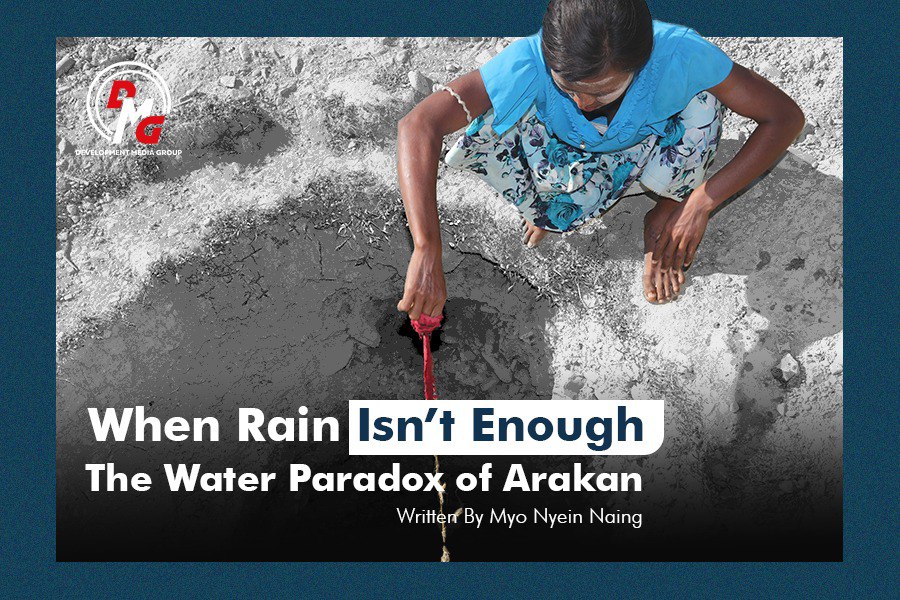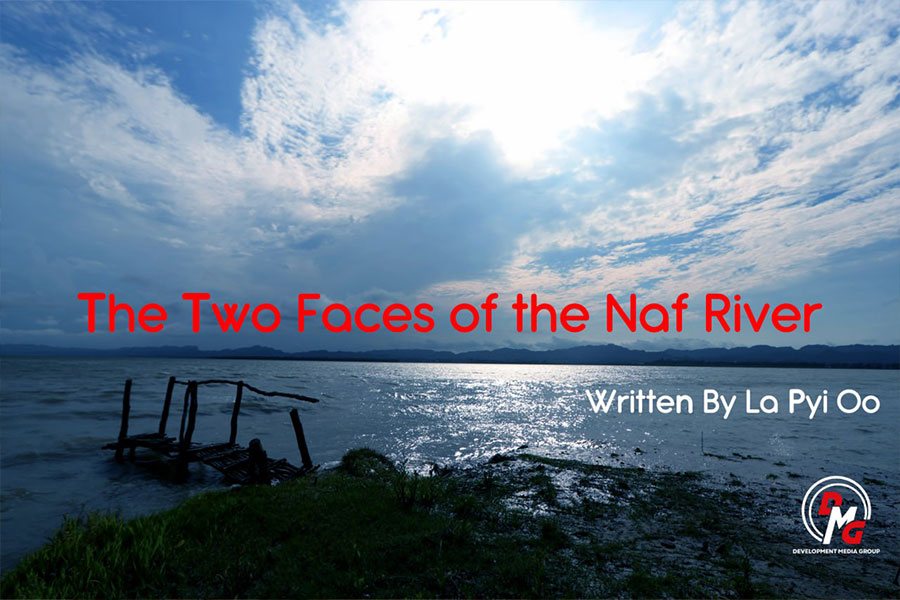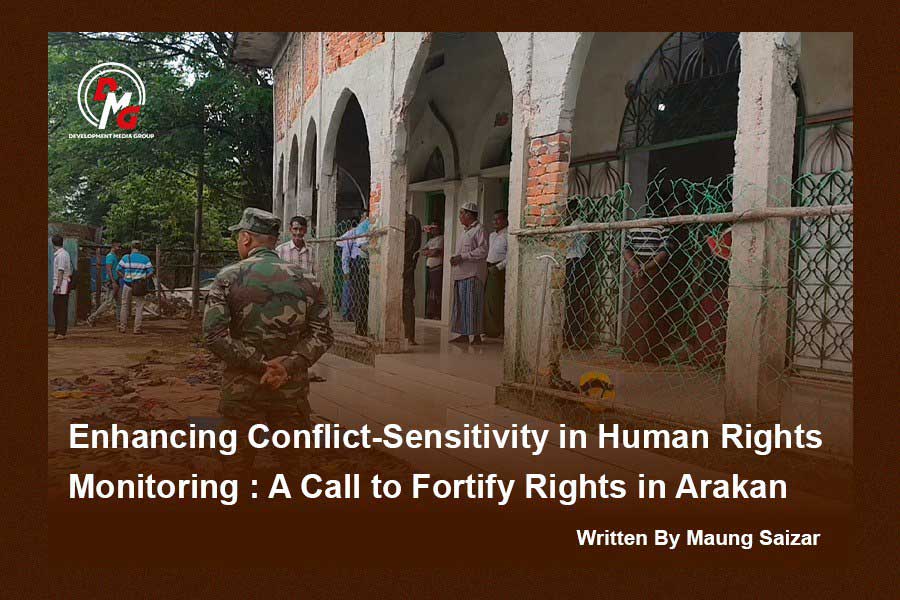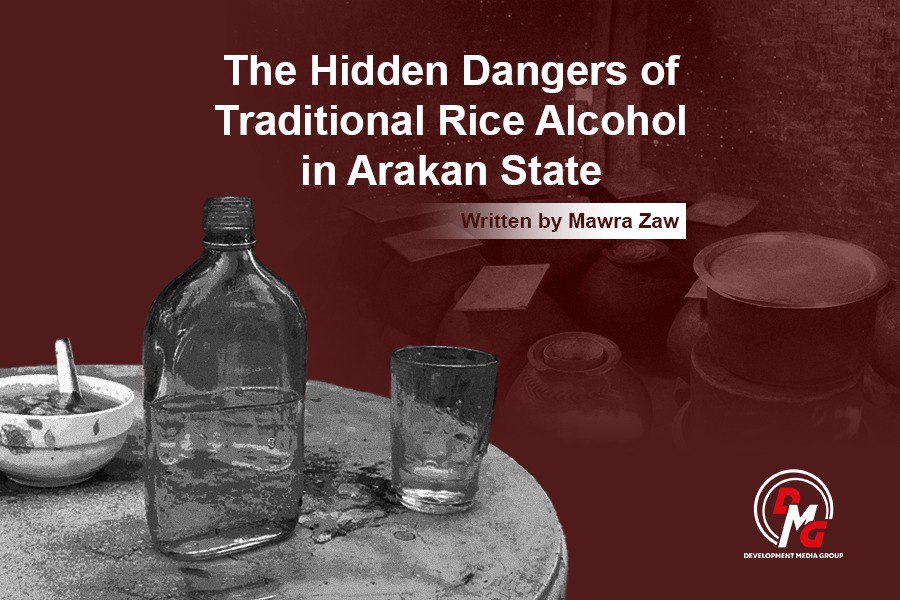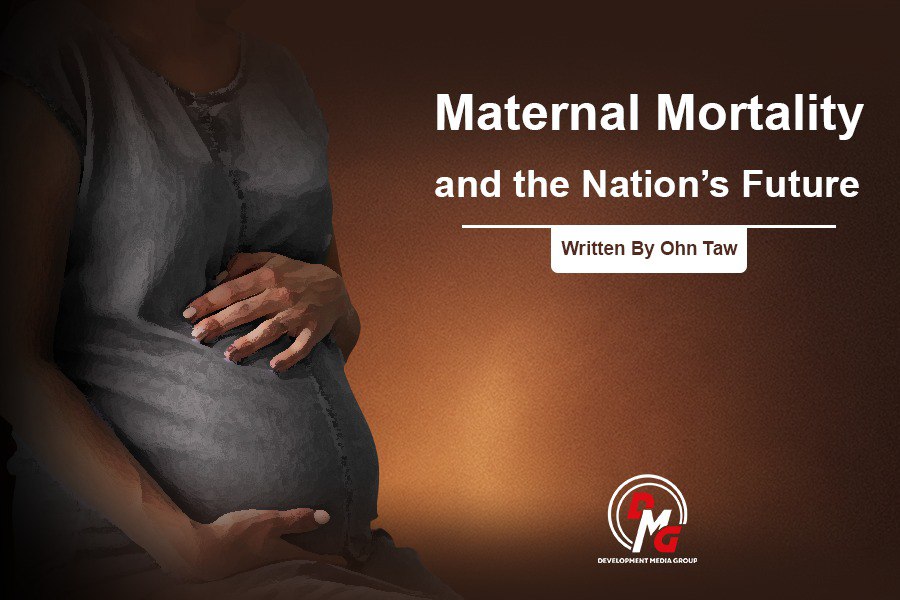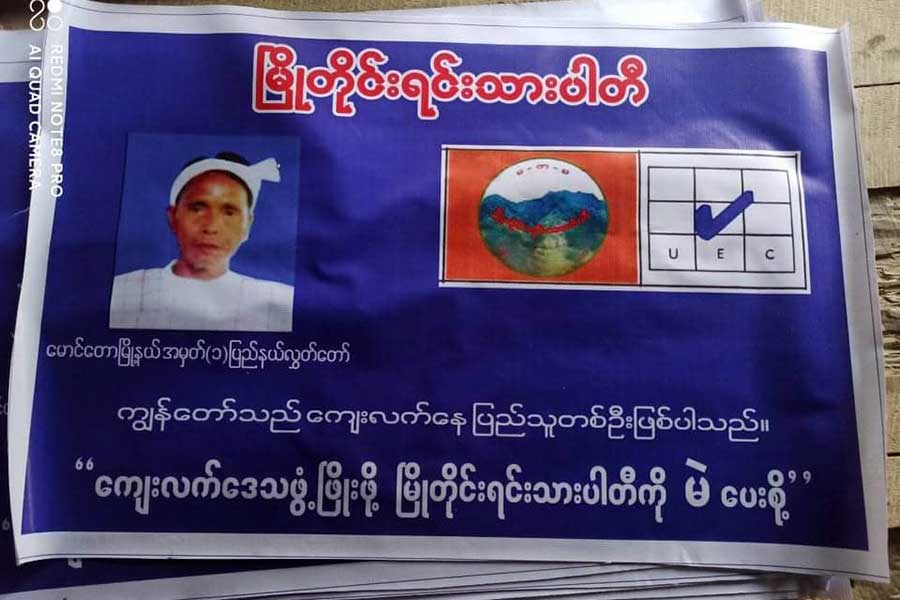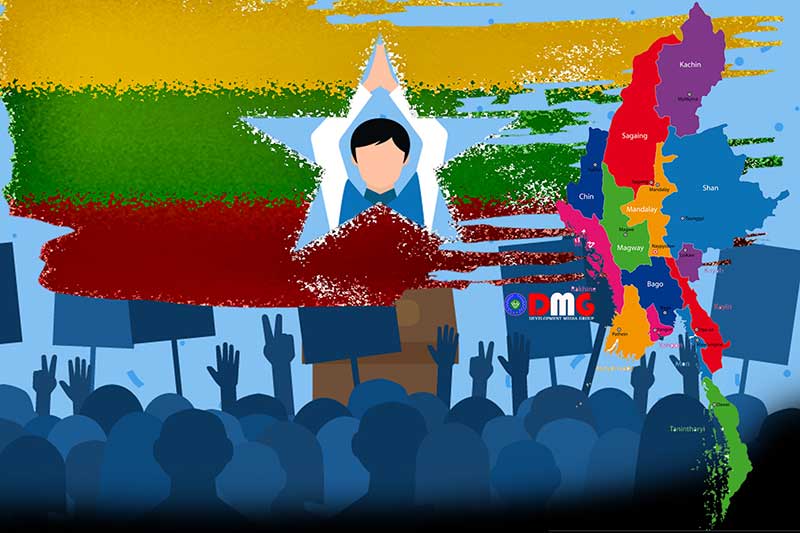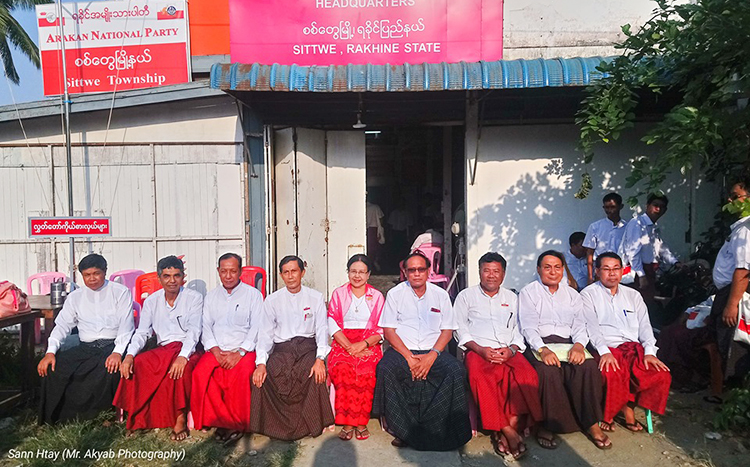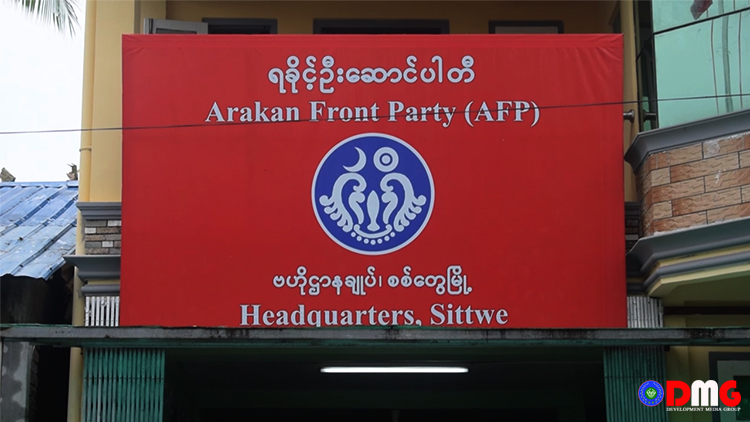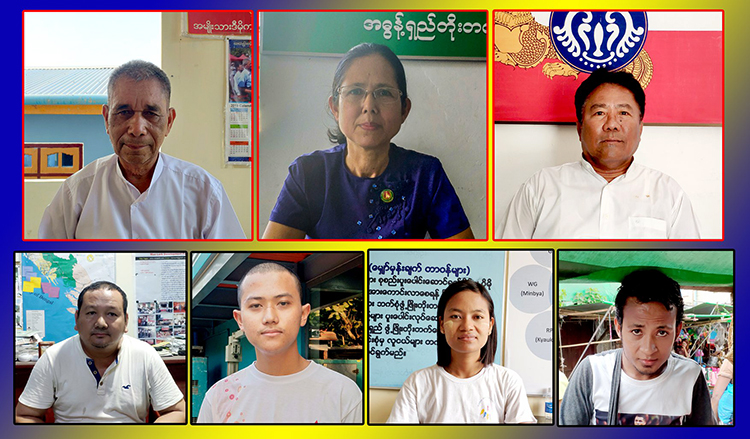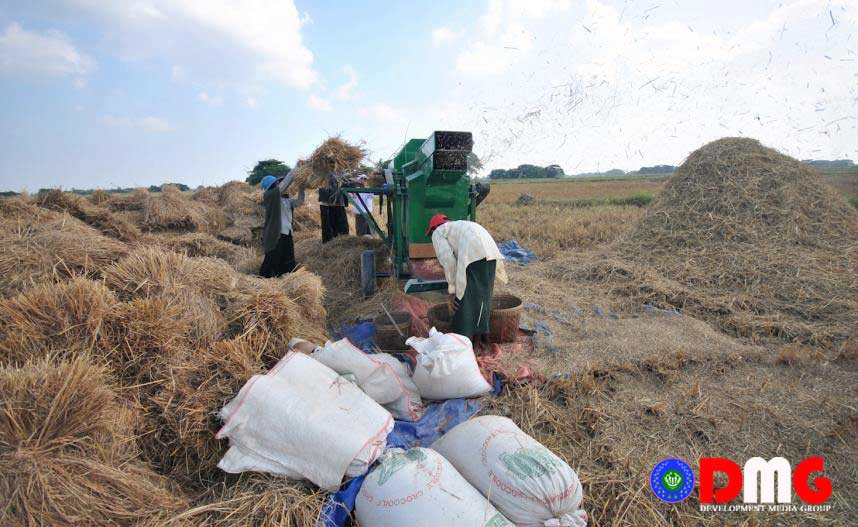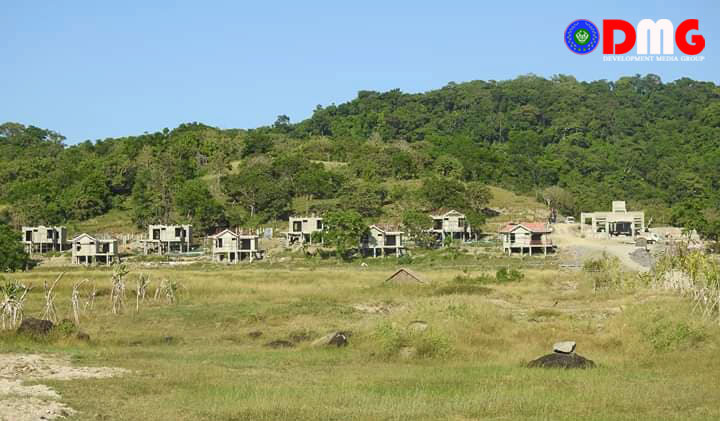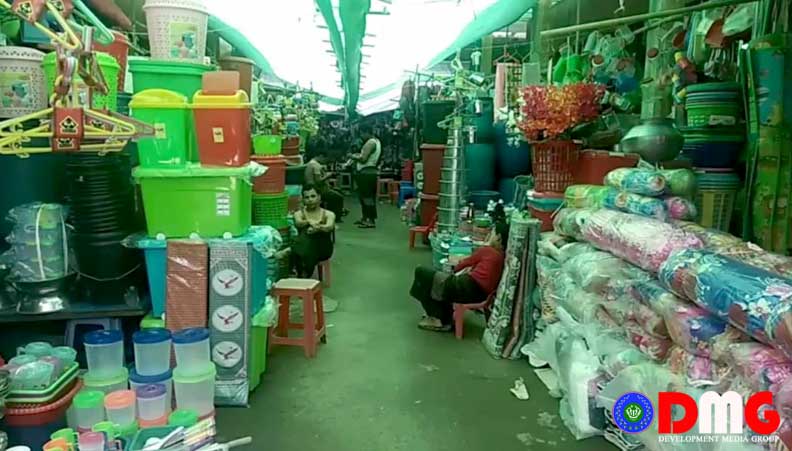- Junta unable to hold elections in dozens of wards and village-tracts in Sittwe, Kyaukphyu
- Fighting escalates between Myanmar military, Arakan Army in Ayeyarwady Region
- Regime steps up civilian arrests in Sittwe
- ULA safeguards Mrauk-U's ancient heritage
- Arakan on the Edge: What the DMG Landmine Impact Report Reveals About Myanmar's Deepening Humanitarian Crisis
"Homeland and the Past, Present, and Future"
Had the houses been destroyed by crossfire, one might find resignation. But there was no ongoing fighting in town at that point. The vandalism and arson by militant elements and junta affiliates—different paths, same aim—are not things one forgets. Many families shared the same fate as Yai Phyu’s.
02 Nov 2025

Written By Maung Mayu (Buthidaung)
In recent days, Yai Phyu and her mother have been looking back on their lives. They were never especially affluent, but they could eat, drink and live without constant worry. Today, however, their circumstances fall within WFP indicators. Myanmar has become one of the five countries with the largest numbers of people suffering acute hunger; according to WFP, one in three-about 16.7 million people-are facing food insecurity.
Yai Phyu and her mother are among many now living in extreme precarity. They are displaced people in a township of Arakan State administered by the Arakan People's Revolutionary Government under the control of United League of Arakan/Arakan Army (ULA/AA). During the war, they became not only homeless but effectively townless, after their birthplace Buthidaung was reduced to ashes-destroyed, under the pretext of war, by the Myanmar military council's forces together with allied Muslim militant elements.
Once known as a "beauty town" on Myanmar's western frontier, Buthidaung sat on the upper Mayu River between the Mayu and Saingtin Mountain ranges. Beautiful though it was, its history was anything but gentle.
From 1942 onward, the area suffered repeated territorial raids. Buthidaung was among the first towns in Myanmar to fall under British colonial control. Colonial administrators favored its abundant agricultural and forest resources; around Paungtawpyin, now known as Phaungtawpyin they planted tea estates along the hills. With most arable land in use, farm labor grew scarce. To meet demand, the authorities brought in Muslim laborers from India (present-day Bangladesh) in large numbers-commonly labeled "Bengalis," a term still used locally.
In the early years those laborers returned home after the farming season. To facilitate travel, the British-owned Arakan Flotilla Company even developed a rail link, remembered locally as Myanmar's first railway, with two tunnels-remnants of which are still noted along the Buthidaung-Maungdaw route. Later, fewer laborers went back; they built field huts and settled. As travel tapered off, passenger numbers dwindled, service ceased, and the line fell into disrepair.
As Britain prepared to withdraw during the Second World War, weapons and ammunition reportedly ended up with certain militant elements. From that period, Mayu District-including Buthidaung-began to experience insurgent territorial claims. The events of 1942 were among the worst the area endured.
Muslim militant groups (not all Muslims-many have long lived peacefully with Arakanese/Rakhine communities) burned Arakanese villages and desecrated pagodas and stupas. Nearly all Arakanese villagers fled eastward to Ponnagyun, Kyauktaw, Mrauk-U, and Minbya. When conditions calmed, few returned; some villages were never repopulated, and Muslim settlers moved in. Thus in the Buthidaung area, villages with Arakanese/Rakhine names but Muslim populations became more common-an enduring legacy of 1942.
Nor did those raids end there. Owing to weak border security under successive governments, Arakanese communities along the frontier repeatedly suffered killings and abuses by militant groups. Large-scale violence erupted again in 2012, 2016, and 2017, which people in Mayu District endured once more. Buthidaung has faced wave upon wave of violence across generations.
The period just before May 18, 2024, was the worst. Before then, thanks to the ULA/AA's stance, Arakanese/Rakhine-Muslim coexistence in town had improved markedly, and daily life was calmer than in the past. But when the AA began operations to seize the town, some Muslims were drawn into the military council's mobilization. As Arakan residents temporarily evacuated amid fighting, rogue elements among those who remained, together with junta units, looted, torched and destroyed at will.
Even when the AA moved to decisively defeat Military Operations Command (MOC)-15 entrenched in Buthidaung, some Muslim fighters cooperated with the junta and entered the fray-though they could not resist the AA offensive. On May 18, the town came under the control of the Arakan People's Revolutionary Government.
When homesick, Yai Phyu and her mother returned to look at their town, they found a silence more dreadful than images of Gaza on the news: devastation that seemed deliberate. Not a single intact Arakan/Rakhine home remained. Bamboo houses and timber-walled huts lay as heaps of ash. Houses not fully burned were half-charred. Larger buildings stood without doors or windows, with scorched debris and roofs torn away. Blackened trees, collapsed thorn-fences, rebar and shattered brick strewn across roads-all of it tore at their hearts. Seeing their family home-built over years-reduced to a mound of ash, they were left speechless.
Had the houses been destroyed by crossfire, one might find resignation. But there was no ongoing fighting in town at that point. The vandalism and arson by militant elements and junta affiliates-different paths, same aim-are not things one forgets. Many families shared the same fate as Yai Phyu's.
These events drew far less attention from human-rights advocates and international media than one might expect. Few outlets highlight abuses by militant groups in Arakan. When accusations are leveled against Arakanese, some narratives are amplified, while discussions of "the Arakan issue" often adopt Muslim-centric framing with little about Arakanese communities' welfare. With such external incentives, some militants have grown bolder. Today, Muslim militant groups have even joined forces to attack the AA.
At this moment, the stance of Muslim communities in Mayu District is crucial. Across eras, too few stood with the people of Arakan, and too many lent support to the opposing side-a cause for regret. Today, the Arakan People's Revolutionary Government allows residents to live and move without ethnic or religious discrimination, extending humanitarian consideration as policy. Rather than co-opting others into "our side," the priority has been inter-communal stability and public order free from ethnic conflict. Evidence shows the AA is not an ethno-chauvinist force fighting only for Arakanese/Rakhine; it is fighting-at great cost-for the country's liberation from military dictatorship. Therefore, Muslims in Mayu District need to make the right choice this time.
If people live and work in Arakan without love for the land, and instead support territorial agitation, they turn their backs on those who offered refuge. Because of misguided choices in the past, the people of Arakan lost religious heritage and entire villages in 1942; in 2012, 2016, and 2017 they lost lives, homes, property and trust. In 2024, the people of Buthidaung lost not only lives and livelihoods, but, effectively, their town. After each convulsion, Muslim families also suffered terribly under "clearance" operations. Under a new administration in a new country, Muslims in Arakan must take care not to be swept up by militant mobilization again.
Only by learning from the past, recognizing openings in the present, and walking together into the future can we build a better country. Today, stability and peace are the hope of people like Yai Phyu and her family. The hunger and deprivation of war can be overcome gradually only in a climate of peace. For their ash-grey homeland to be safe from militant violence, everyone in Arakan must stand together as one.




